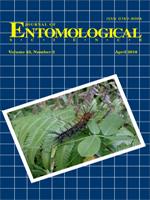Laboratory studies of the numerical response of the predator Cyrtorhinus lividipennis Reuter to its natural prey, Nilaparvata lugens Stal, determined the reproductive response to number of eggs oviposited, prey-dependent birth rate, prey-dependent mortality rate, and life cycle duration to different densities of N. lugens eggs. The experiments were conducted in cages with 1, 5, 10, 15, 20, and 30 eggs/predator per cage with 20 replications. The results indicated that the numerical response of C. lividipennis was positively related to prey density, with greater amounts of eggs laid, a longer duration of the lifespan, and adult age observed at a high prey density than a low prey density. However, the sex ratio and adult longevity were not affected by the prey density. The minimum prey density for completing C. lividipennis development was 5 eggs/d, whereas the minimum number of prey needed to produce an egg was 10 eggs/d. The study of the numerical response provided data for calculating the prey-dependent birth rate and prey-dependent mortality rate when C. lividipennis consumed one N. lugens egg. The results indicated that the prey-density–dependent birth rate was 0.123 eggs/bug/d and the prey-density–dependent mortality rate was 0.027 bugs/d.
How to translate text using browser tools
1 April 2018
Numerical Response of Cyrtorhinus lividipennis (Hemiptera: Miridae) to Nilaparvata lugens (Hemiptera: Delphacidae)1
Ubon Tangkawanit,
Nonglak Hinmo,
Wirote Khlibsuwan
ACCESS THE FULL ARTICLE

Journal of Entomological Science
Vol. 53 • No. 2
April 2018
Vol. 53 • No. 2
April 2018
birth rate
brown planthopper
death rate
numerical response




